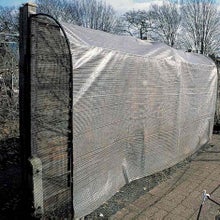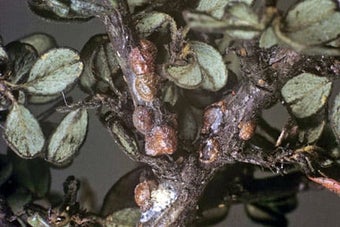
Quick facts
Train as a fan against a wall or as a bush in a container
Prune long bare branches hard in spring
Retain shoots with overwintered fruitlets at their tips
Pinch out new shoots in early summer
Hard pruning encourages vigorous regrowth
Before you start
Figs will grow into large, vigorous, leafy shrubs or trees unless pruned regularly and their roots restrained. They may still produce fruit, but protecting these from frost and harvesting them can be tricky.
But you can easily reduce a fig’s excess vigour by pruning it regularly and restricting its roots in a lined pit, root-control mesh bag or large container. This will also encourage it to produce fruit, rather than too much lush, leafy growth.
For more on restricting fig roots and protecting fruit from frost, see our guides:
To maximise cropping and limit their overall size, figs are usually trained as fans against a sunny wall or fence, where they make an attractive feature. They can be kept to about 1.8m (6ft) tall and around 3.5m (11½ft) wide, but can be allowed to grow taller and wider if you have more space. In colder locations, figs can be inside a greenhouse on horizontal wires hung 30cm (1ft) away from the glass.
Alternatively, grow a fig as a free-standing bush or a standard (on a single tall stem) in a container.
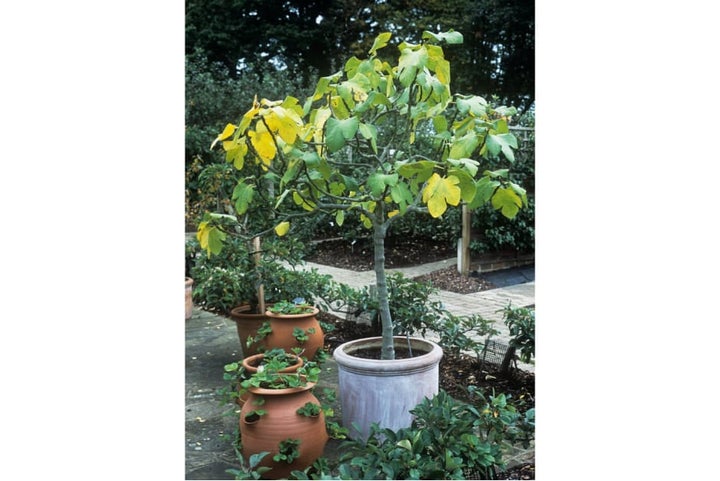
Fruiting
It’s important to understand where and when the fruit is produced, to make sure you prune correctly. Figs generally produce two crops a year, but in the UK’s cooler climate and shorter growing season, only one will ripen outdoors. Figs grown under glass all year round may successfully ripen both crops.
- The first crop is produced from embryonic figs that overwintered as pea-sized at the shoot tips. These formed in late summer of the previous year. They stay tiny all winter, but are prone to frost damage so it’s best to protect them over winter. In spring, they start growing and should have enough time to fully develop and ripen by late summer
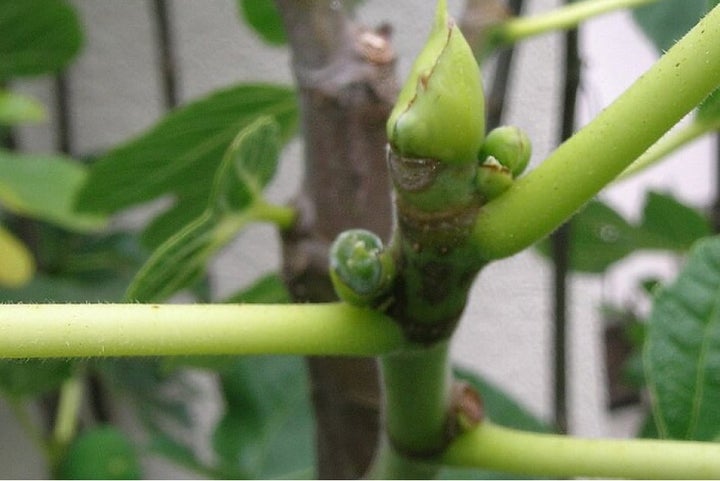
- Thesecond crop forms in late spring to early summer on the current season’s growth. These figs seldom have time to ripen outdoors. They can grow to a reasonable size, but will remain hard and green. They may survive the winter, but will fail to grow and ripen the following year, so are best removed in mid-autumn
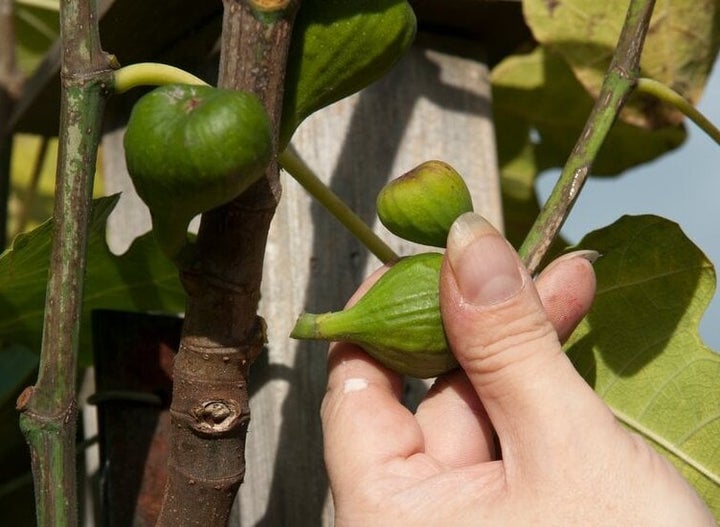
Winter protection
Although the mature wood of most fig cultivars can withstand frost, the younger shoot tips that carry the fruitlets can be damaged by hard frost. So it’s important to plant figs in a sunny, sheltered spot to protect the fruitlets and ensure good ripening.
In colder locations, provide winter protection or keep the fig in a container and move it to a frost-free position over the winter months.
For more details, see How to grow figs.
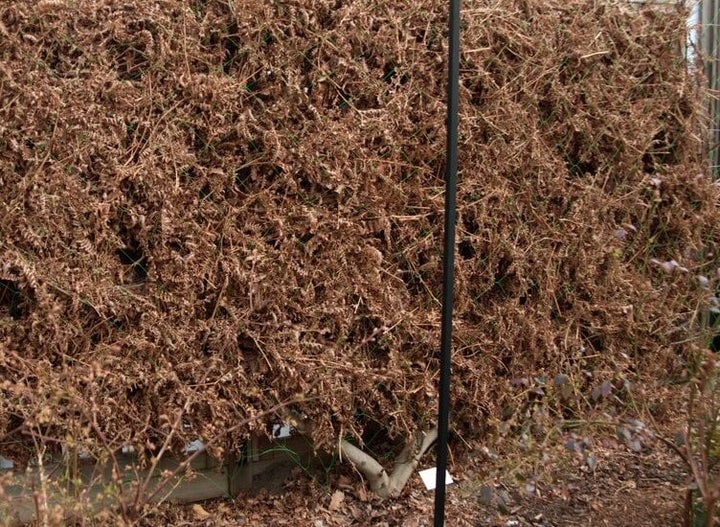
When and how to prune
When to prune figs
Prune twice a year – in early to mid-spring, after the last hard frost, and in early to mid-summer.
When pruning figs, bear in mind that the is an irritant, so wear protective gloves and start pruning from the base of the plant and work upwards, to avoid any drips.
How to prune figs
For best results, follow these simple guidelines, whether you’re pruning a fan or bush-trained fig:
- When pruning in spring, remember that your crop will develop from the pea-sized on the tips of shoots that formed the previous year. Although you may need to prune some of these in spring, make sure you leave plenty unpruned. For preference, retain the more compact shoots with tiny fruitlets at their tips
- Fig trees have a tendency to develop long bare branches and shoots. Just shortening these achieves very little – instead, prune hard to encourage replacement shoots low down. Cut branches back to 5–8cm (2–3in) long and younger shoots to 2.5cm (1in) long
- When pruning in early spring, the general approach is either to leave the branch/shoot unpruned or prune it back hard. Always keep plenty of new shoots unpruned
- To encourage more branching instead of longer shoots, the tip of new shoots once they have five leaves, from early summer until mid-summer
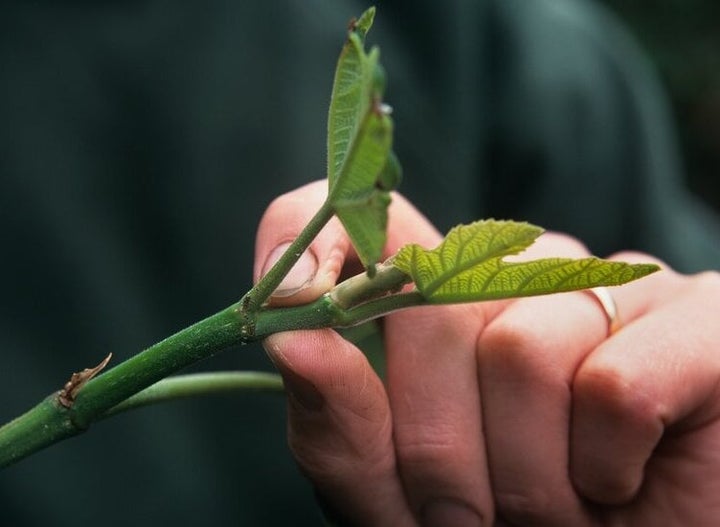
Fans – pruning and training
Fan training is an attractive and productive way to train a fig tree against a sunny wall or fence. You will need to attach horizontal wires to the support, spaced 30cm (1ft) apart. Spreading out the branches in a fan shape aids fruit ripening, as does the heat that radiates from a warm wall. Fan-trained figs need pruning twice a year.
For advice on training newly planted fig trees to form a fan, see our guide to fan-training.
In spring
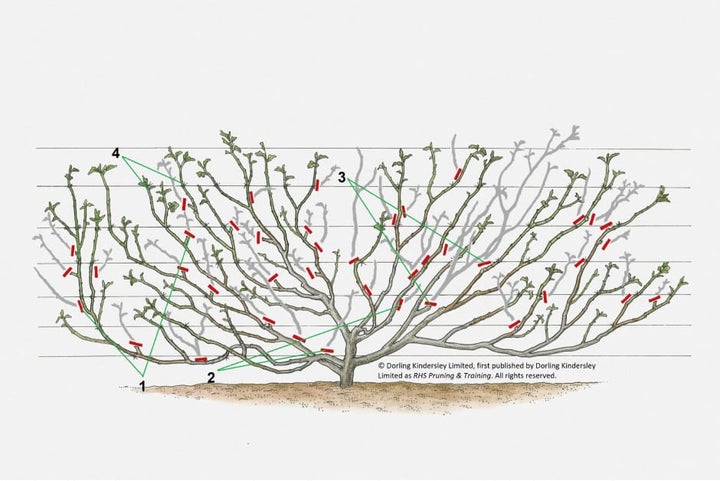
Start pruning once the danger of long, hard frosts has passed:
- Reduce the number of young shoots formed the previous year by about a third, leaving a 2.5cm (1in) stub and aiming for good spacing. For preference, remove lanky shoots without tiny at the tip
- If you don’t want replacement shoots to grow, for example because they would be too crowded or badly placed, remove them entirely
- On mature fans, remove one or two older, over-long, bare branches, pruning them to 5–8cm (2–3in) stubs to encourage new replacement shoots. Prune outward-growing shoots hard back and entirely remove shoots growing inwards towards the wall or fence
- Tie in new shoots to the wires, spreading them out in a fan shape
In early summer
- As new shoots develop, tie them to the support
- In early summer, remove the tip of every other young shoot once they have five leaves, to encourage branching and reduce the production of fruit that won’t ripen. The cuts may bleed , so wear protective gloves and long-sleeved clothing
- Stop pruning back new growth by mid-summer, when the embryonic fruitlets for next year’s crop will start forming at the shoot tips. If you prune after mid-summer, the resulting new growth won’t have time to form fruit embryos before the end of the growing season, so will not produce figs the following year
In mid-autumn
- Remove the larger figs that failed to ripen. Only the pea-sized embryonic figs at the shoot tips will give you a crop next year
Bushes and standards – pruning and training
Figs in containers are usually trained as free-standing small bushes, with a short trunk topped with a crown of branches, or as standards, with a taller, clear stem. They can also be grown as multi-stemmed shrubs branching from the base. These forms all need similar treatment and should be pruned twice a year.
In spring
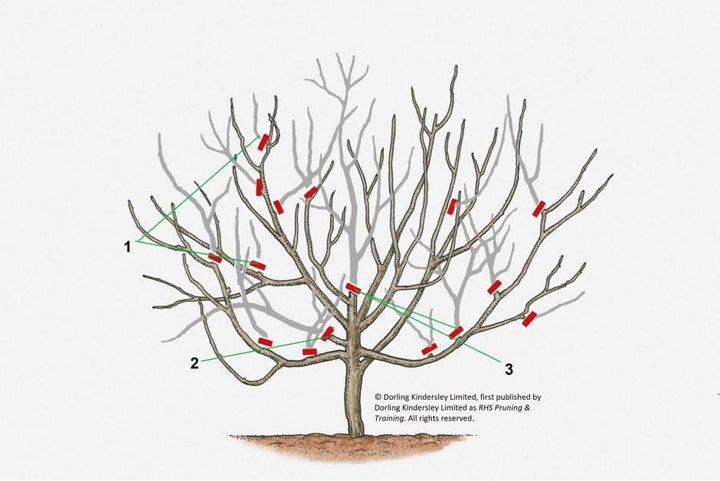
Prune after the danger of prolonged hard frosts has passed, but before new growth starts in spring:
- Prune back any frost-damaged, crossing or weak branches to 2.5cm (1in) stubs, to encourage the growth of replacement shoots. Aim to retain shoots with tiny at their tip. Where the branches are crowded, remove them entirely without leaving a stub
- On more mature plants, prune back one or two over-long bare branches leaving a 5–8cm (2–3in) stub, to encourage replacement growth
- Where re-growth is undesirable, such as in the middle of the bush or where the branches are crowded, remove the branch entirely, without leaving a stub
In early summer
- Pinch back the new growth of young shoots as soon as they form five to six leaves. This will encourage branching and the formation of embryonic fruitlets at the tips, which will become next year’s crop
- Stop pruning back new growth by mid-summer, when the embryonic fruitlets for next year’s crop will start forming at the shoot tips. If you prune after mid-summer, the resulting new growth won’t have time to form fruit embryos before the end of the growing season, so will not produce figs the following year
In mid-autumn
- Remove the larger figs that failed to ripen. Only the pea-sized embryonic figs at the shoot tips will give you a crop next year
Renovation pruning
If a mature fig has outgrown its space, it will cope with being hard pruned, but will then produce excessive re-growth. So it’s best to stagger any major pruning over several years, unless total renovation is urgently required.
Any vigorous re-growth should be thinned out gradually over several years, removing about one-third of the shoots each spring. Then the shoot tips in early summer to encourage branching. If the plant is growing in the ground, getting strong re-growth under control may take three to five years.
Frequently asked questions
My fig produces barely any fruit – what am I doing wrong?
You may be pruning off the shoot tips that carry the pea-sized for the coming year’s crop. Avoid rigorous shortening of new growth in spring. Frost can also damage the shoot tips and fruitlets, so consider winter protection in frost-prone locations.
Why are there lots of unripe figs at the end of summer?
These are probably figs that formed on the current season’s growth and they seldom ripen outdoors in the UK. They should be removed in autumn. Only figs that grew from the overwintered pea-size embryos will ripen outdoors. See Fruiting, above.
Why has my fig tree started dropping fruit in spring?
Fruit drop is usually caused by drought. Container-grown figs need regular watering from spring onwards. Figs planted in the ground with root restriction may also need watering in warm, dry weather.
Why have the leaves of my fig tree turned yellow? Some have gone brown and dropped off.
Leaf yellowing is generally caused by lack of water and nutrients, so water as described above and feed as follows. With containerised figs, feed fortnightly from spring to mid-summer using a high potassium liquid fertiliser, such as or Phostrogen. With figs growing in the ground, feed in spring with one handful of high potassium fertiliser such as Vitax Q4 or blood, fish and bonemeal. But take care not to overfeed, which would only encourage leafy growth.

